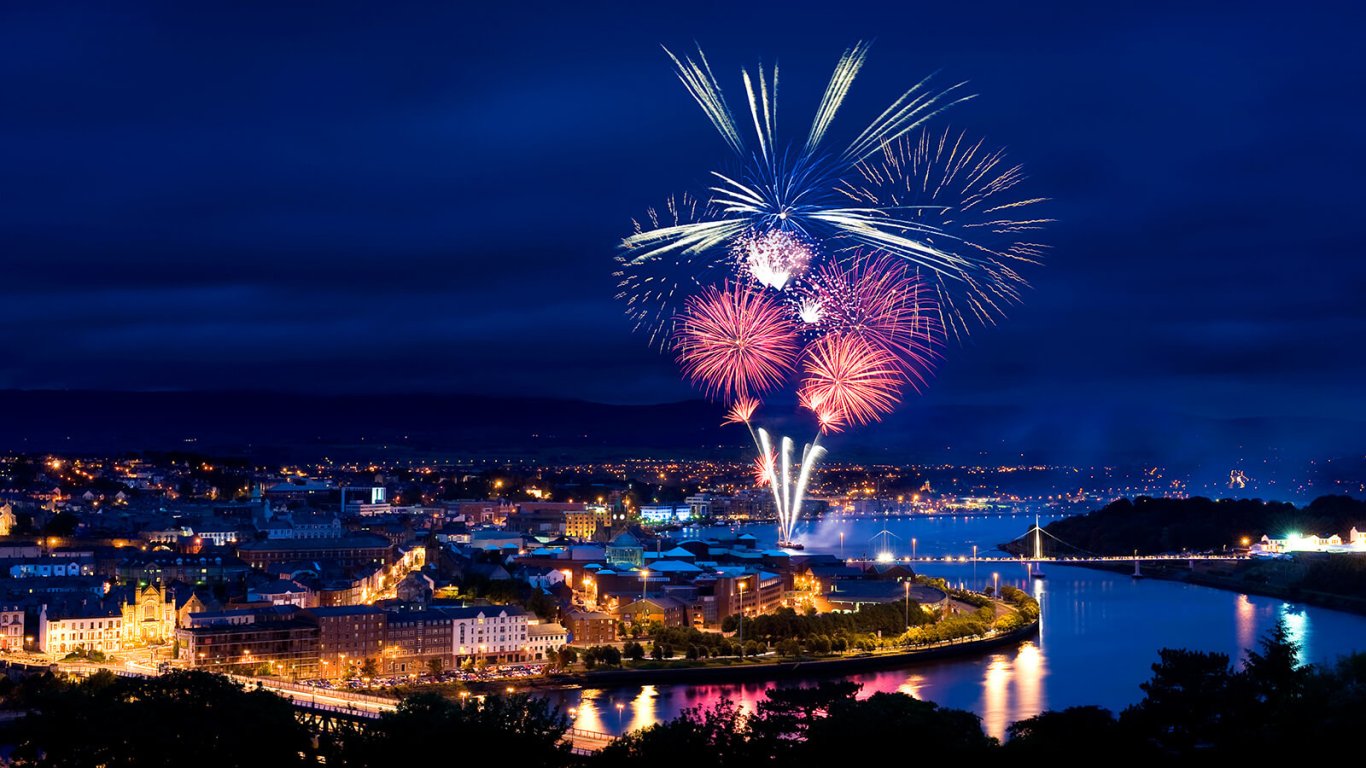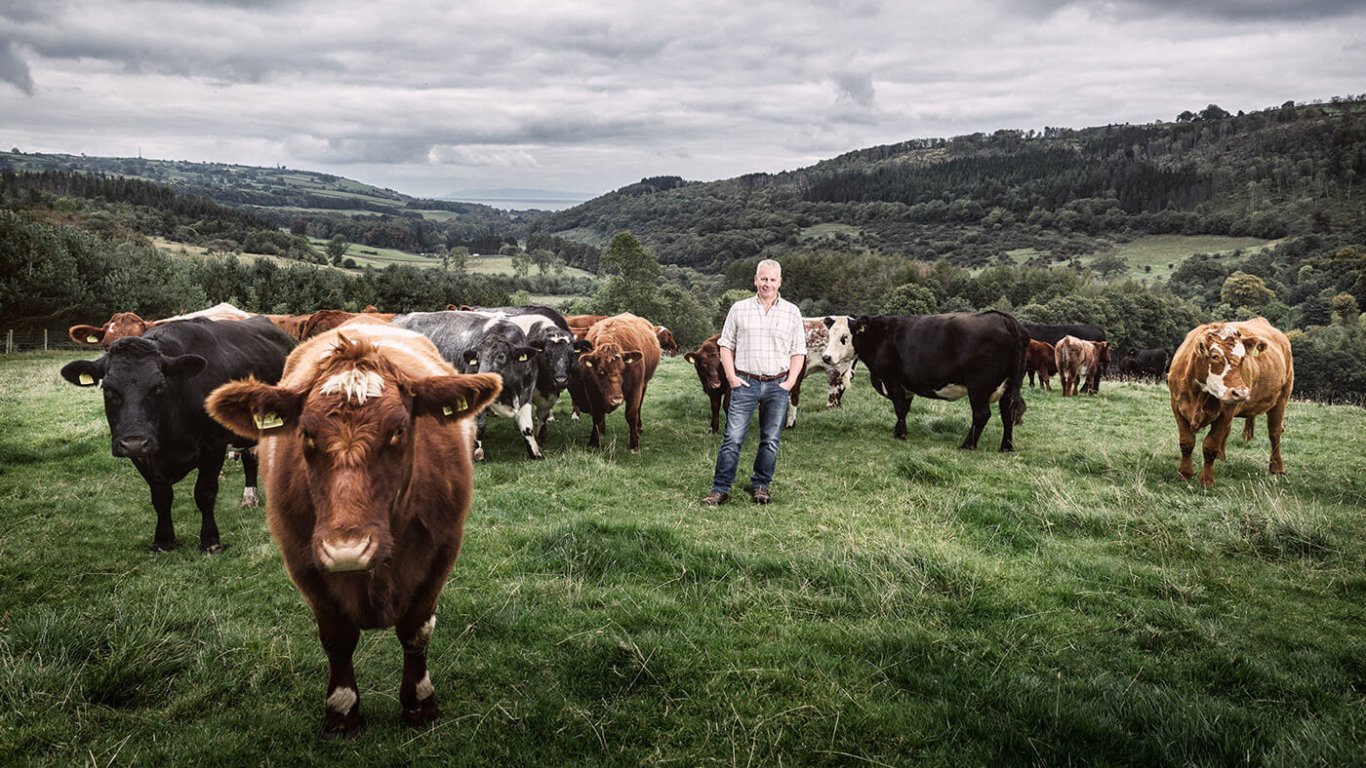When you're carving your pumpkins this Halloween, spare a thought for the ancient Irish.
It's in pre-Christian Ireland that the origins of this spooky holiday lie.
Halloween started as a pagan festival but has become a global celebration of all things spooky.
Read on to explore the origins and traditions of Halloween, learn amazing Halloween facts and easy-to-make Irish Halloween recipes.
💀 Did Halloween Start In Ireland?
Halloween began as a pagan festival over 1000 years ago.
In Ireland, Scotland and other pre-Christian Celtic societies, the major winter festival was known as Samhain (pronounced SAH-WUN).
November in Ireland has long, dark nights. These conditions symbolised the beginning of the Celtic year. At this time each year, it was believed that the gap between the real world and the ghost world became blurred.
Fairies, púkas (ghosts), banshees and other spirits were able to slip into our world at Halloween!
Their goal? To make mischief!
Halloween has always been spooky!
🎃 Do Irish People Celebrate Halloween?
Halloween is a BIG deal in Ireland.
- 👻 Children Go Trick or Treating in their Local Neighbourhood
- 🎆 Fancy Dress Parties and Firework Displays Are Popular
- 🎃 People Carve Pumpkins and Illuminate Them
- 💀 Homes and Stores are Decorated with Pumpkins, Skulls and Skeletons
☘️ What's Halloween in Ireland Like?
Halloween in Ireland bears many similarities to celebrations in the USA and Canada.
But there are some important differences:
- 🥔 People Eat Traditional Irish Foods like Barm Brack and Colcannon (find recipes below)
- 🎃 Pumpkins aren't the only Jack O'Lanterns - spooky turnips were traditionally carved in Ireland too!
- 🧚♀️ Halloween in Ireland is still linked to pre-Christian beliefs in the otherworld and supernatural beings
- 🗓️ Samhain is the Irish word for Halloween but it's also the Irish word for the month of November.
Halloween is SUCH a big deal in Ireland that it's actually a national holiday. Banks, businesses and government offices all close down.
This happens on the closest Monday in October to the 31st. Schools close for at least one week.
😋 What Do Irish People Eat At Halloween?
Food has a strong association with Halloween in Ireland. There are a number of traditional Irish recipes still eaten at this time of year.
Make sure you try one of these easy-to-make and traditional Irish Halloween foods:
🥔 How To Make Colcannon - Irish Halloween Recipe
Colcannon is mashed potato with butter, onions and kale or cabbage.
🧈 How to Make Barm Breac - Irish Fruit Cake Recipe
Barm breac or tea brack is Irish fruit cake moistened by soaking raisins in tea.
It's then served warm, sliced and slathered with creamy, slightly salty Irish butter.
Happy Days!
💍 Why Do Irish People Hide Rings In Food?
💡 Did You Know? Even today, it's traditional in Ireland to leave a ring or a coin inside colcannon or barm breac when making the recipe.
The person who found the lucky item in their food would be blessed with money, a marriage or some other good fortune.
If you find a ring this year, good things may be heading your way!
Not full yet? Try these traditional Irish Christmas foods
😇 How Did Samhain Become Halloween?
Samhain was celebrated in Gaelic Ireland before the festival became associated with Christianity.
Irish society was non-Christian when early preachers — like Saint Patrick — arrived from overseas to spread the gospels in the 5th and 6th centuries.
Pagan beliefs remained widespread and Ireland wasn't fully converted to Christianity until medieval times.
Some might say the process is ongoing!
To 'piggyback' on pagan traditions, the early church associated Christian holy days with deities and festivals that already existed.
Saint Bridget, for example, has a clear lineage to Brigid, or Brigit, a figure from pre-Christian Irish mythology.
🦇 Where Does The Word Halloween Come From?
For Christians, November 1st is known as All Saints Day.
It's a day to pay your dues to all Christian saints.
An older name for this holy day is All Hallows Day.
The night before All Hallows Day was Hallow's Evening.
In time, this phrase was shortened to... Hallowe'en!

🍬 Why Do People Go Trick Or Treating?
Lots of modern traditions of Halloween can be traced to Ireland in times past.
In early 20th century Ireland, trick or treating was known as 'guising' (pronounced guy-zing)
In the countryside, people dressed up in straw masks and went visiting their neighbours. They would walk from house to house without speaking, to try to conceal their identity.
Neighbours would welcome visitors with food and music.
It sounds a bit scary but was just for a bit of craic.
🎃 Why Do People Carve Pumpkins?
Carving a pumpkin to make a Jack O'Lantern is about as traditional as it gets at Halloween.
Pumpkin carving is a widespread practice in Ireland at Halloween, as well as elsewhere in Europe and the USA and Canada.
But pumpkins aren't native to Ireland. So where does this Halloween tradition come from?

Well, it too originated in Ireland. Without pumpkins, people used turnips instead. They were known as turnip lanterns, or ghost turnips.
🔥 Why Are Bonfires Lit At Halloween?
Halloween is still believed by some in Ireland to be a time for communing with spirits.
Bonfires are lit.
Why bonfires? The original purpose was to spread light at a time of darkness and keep evil spirits at bay.
Animal bones were traditionally burnt in the fires; hence the origin of the name, 'bone-fire'.
👺 Why Do People Wear Fancy Dress At Halloween?
People all over the world get dressed up and wear costumes and fancy masks at Halloween.
But did you ever wonder why?
In Ireland of old, people dressed up in garish costumes at Halloween to confuse the spirits.
They would also leave food outside their front door for 'the little people' (this is another name for Irish fairies).
Others left tributes for fairies at hawthorn trees, known as 'luck trees', 'fairy trees' or 'rag trees'.

💡 DID YOU KNOW? Hawthorn trees are still known as 'fairy trees' today in Ireland.
Of course it's not only evil souls that would visit on the 31st October.
Some people believed that their dead ancestors would pop in for a visit. Hearths were left with roaring fires and feasts of fresh food for benign ghostly visitors on the night!
Whatever you do this Halloween, don't forget to leave treats out for any otherworldly visitors you might get during the night!
🐄 Halloween/Samhain & Farming Folklore
Halloween isn't all ghosts though.
Halloween/Samhain was important for ancient Irish farmers too.

For farmers, the festival acted as a deadline. All crops had to be gathered and livestock brought in before the dark, wet days of winter arrived.
It was said that no berries or fruit could be eaten after Samhain in Ireland because the púka (ghost) would spit on them.
Even today, in the Irish countryside, people will not eat blackberries after the first frost of the year (normally in November).
For farmers in Ireland in times past, it was believed that weather forecasts for the coming winter could be made according to the direction and strength of the wind at midnight on Halloween, or by the shape of clouds over the moon.
🎉 What Were The Other Irish Pagan Festivals?
As well as Samhain, there were three other major festivals celebrated throughout the year in pre-Christian Ireland.
- Imbolc (pronounced "im-bulk" ): 1st February
- Beltaine (pronounced "be-yawl-tin-ah") : 1st May
- Lughnasa (pronounced "loo-na-sa") : 1st August
These ancient pagan festivals live on in modern Ireland, through Christian saints.
1st February is St. Bridget's Day, celebrated by making Bridget Crosses. Beltaine became May Day. Lughnasa is sometimes referred to as Reek Sunday in Ireland; pilgrims climb Croagh Patrick in Mayo.










